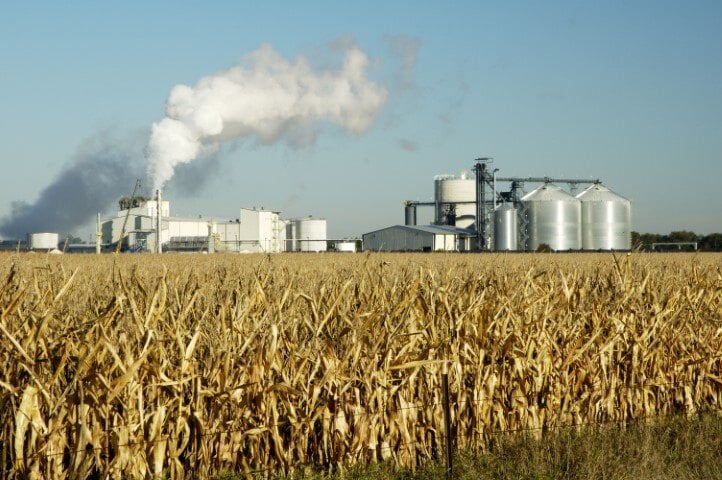Brazil Ethanol Production: Why are they so good at it?
When it comes to making ethanol for fuel, there's no country better at it than Brazil. Brazils ethanol production has been happening on a large scale...

Today, we’re going back to the basics in talking about the fuels we use, the gasoline and diesel that we buy at the gas station. Even the most “un-technically-savvy” person out there knows that we get most of our fuel from crude oil. Which is why people pay attention to oil prices – the price of oil goes up, we all pay more at the pump.
Going to the local gas station once or twice a week is something we do without thinking and often take for granted. What would happen to the thousands of cars on the road today if the oil ran out? Where does oil come from? Is the planet producing any more oil? Let’s take a closer look at where oil comes from and what will happen when it runs out.
 In the Time of the Dinosaurs
In the Time of the DinosaursTo learn more about how oil is made, we have to look back into the distant past of our planet. Oil is made primarily of carbon and hydrogen and takes millions of years to form. Most of the oil we use today was formed hundreds of millions of years ago. In fact, roughly 70 percent of the currently available oil was formed during the Mesozoic age — the age of the dinosaurs.
At the time, more of the Earth was covered in water and these warm, shallow oceans were the perfect place for the oil to begin to form.
These warm, shallow oceans were home to small organic creatures including phytoplankton, zooplankton, algae and bacteria. These microscopic creatures would live out their lives in these oceans and when they died, they would sink down to the ocean floor. This dead organic matter settled into the ocean floor, which was a clay-like material at the time, to create an organic mud.
There was so much plankton and other microscopic life in the oceans during this time that there was a plethora of this organics-rich mud.
If there was too much oxygen in this prehistoric mud, it would cause the organic material to decompose and oil can’t be formed without that organic material. In areas where there was a lack of oxygen — "anoxic environments," as they're called — the organic-rich mud would be buried and later become sedimentary rock known as "organic shale."
If the sedimentary rock reaches a depth of between one and two and a half miles, its temperature climbs. The perfect combination of heat and pressure — between 90 and 160 degrees Celsius — turns the shale into kerogen, or "oil shale." If the shale is deeper or at higher temperatures, the kerogen turns into natural gas or graphite instead. This perfect temperature is known as the "oil window."
As the oil forms from the oil shale, some of it escapes and moves upward, displacing the water above it. These droplets of oil move through the porous rock until it reaches a level of impermeable rock which serves as the cap of the reservoir.
Geologists are employed by oil companies to find oil shale and oil reservoirs. Before technology advanced, they used surface examinations and shallow drilling to find oil shale. Geologists today use a variety of different tools to measure everything from changes in the earth’s magnetic field to sniffers that can detect the oil hydrocarbons in the water.
Once an oil reservoir is detected, the oil company can drill down though that reservoir cap to access the oil. Drilling into these reservoirs allows the companies to retrieve the oil and transform it into products that we use every day.
Most of the crude oil we harvest is used for gasoline. We use roughly 9.3 million barrels of crude oil for gasoline every single day. The rest of it is converted into other fuels like kerosene jet fuel, heater fuel oil, aviation gasoline and kerosene.
Some of it is converted into asphalt and road oil used to pave the thousands of miles of highway around the world.
When it comes down to it, will there be enough oil to last us forever?
No.
The oil we have now took hundreds of millions of years to form. The surface of the planet is also much different than it was millions of years ago, meaning the conditions needed to form oil shale don’t occur as frequently.
Even if we had enough microscopic organic life dying and settling to the ocean floor to form oil shale, the process takes millions of years, so we won’t be around by the time new oil is formed. At current levels of consumption, the world’s oil supply will be used up in roughly 50 years.
It’s up to us to start using our world’s resources more sustainably. The world might be making more oil, but we won’t be around to reap those benefits.
The balance between making sure the growing economies of the world have the energy they need and being responsible stewards of our planet’s finite resource is an extraordinarily tricky tightrope to walk. And there are always new, unexpected wrinkles that emerge, many of them to our advantage.
Ten or twenty years ago, “futurists” and energy analysts were worried about the peak oil concept – the idea that we were going to run out of oil (that’s a big deal). Now, nobody’s saying that possibility isn’t still out there. But some things have emerged on the scene that have pushed it back. Like the United States’ transition to using more natural gas. The United States is now the largest energy producer in the world, even surpassing the oil-rich OPEC nations of the Middle East. We have the discovery of tremendous reserves of North American natural gas to thank for that.
So our energy outlook is brighter than they thought it would be, twenty years ago. We need to take this opportunity to be better stewards of what we’ve been entrusted with.
Infographic Credit: https://www.smarttouchenergy.com/resources/how-oil-is-made

When it comes to making ethanol for fuel, there's no country better at it than Brazil. Brazils ethanol production has been happening on a large scale...

As the coronavirus pandemic spread in 2020 and the consequences hit oil markets, lost in the shuffle was the fact that oil prices dropped to lows not...
“You may be wrong or you may be right.”